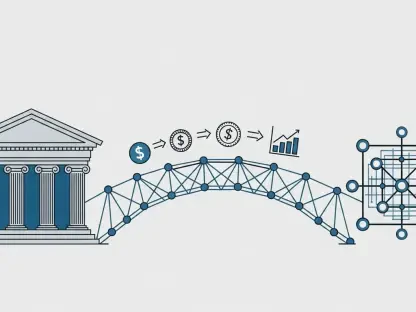I’m thrilled to sit down with Kofi Ndaikate, a seasoned expert in the ever-evolving world of fintech. With a deep understanding of blockchain, cryptocurrency, and the intricacies of regulation and policy, Kofi brings a wealth of knowledge to today’s discussion. We’ll dive into the latest trends in digital banking, the transformative potential of payment systems, and the strategic moves shaping the industry, including insights into Banking-as-a-Service platforms and international expansion. Let’s explore how these innovations are redefining financial services and what they mean for businesses and consumers alike.
What inspired you to dive into the fintech space, and how has your journey shaped your perspective on digital banking innovations?
I’ve always been fascinated by how technology can solve real-world problems, especially in finance where access and efficiency are often barriers. My journey started with exploring blockchain’s potential to disrupt traditional systems, and over time, I’ve worked on everything from cryptocurrency projects to regulatory frameworks. This broad exposure has shown me that digital banking isn’t just about tech—it’s about trust, user experience, and creating seamless solutions. I’ve seen firsthand how innovations like mobile banking can empower underserved communities, and that’s what keeps me passionate about this space.
How do you see the role of payments evolving within digital banks, and what excites you most about leading such initiatives?
Payments are the heartbeat of any financial institution, and in digital banks, they’re becoming more integrated and instantaneous. What excites me is the opportunity to build systems that not only process transactions but also enhance customer experiences through speed and transparency. Leading initiatives in this area means focusing on partnerships and technologies that make payments invisible—think embedded finance where transactions happen seamlessly in the background. It’s about turning a functional necessity into a competitive edge.
Can you explain the significance of Banking-as-a-Service platforms and how they’re changing the landscape for fintechs and other businesses?
Banking-as-a-Service, or BaaS, is a game-changer because it democratizes access to banking infrastructure. It allows fintechs, startups, and even non-financial businesses to offer banking products without building everything from scratch. For instance, through BaaS, a retail app can provide payment services or safeguarded accounts to its users. This lowers the entry barrier, fosters innovation, and creates a more interconnected financial ecosystem. The real impact is in how it enables smaller players to compete with traditional giants by leveraging ready-made, compliant solutions.
What are some of the key challenges in relaunching or repositioning a service like a BaaS platform, and how can they be addressed?
Relaunching a BaaS platform often involves aligning with evolving regulations, integrating new technologies, and differentiating in a crowded market. One major challenge is ensuring compliance without stifling innovation—regulatory demands can be a moving target. Another is scalability; as more partners come on board, the system must handle increased volume without compromising security or speed. Addressing these requires a clear strategy—investing in modular tech that can adapt to changes, fostering strong regulatory relationships, and focusing on niche markets or unique value propositions to stand out.
How do you think international expansion, especially into markets like the US, impacts the strategy for payment services in fintech?
Expanding internationally, particularly into a market like the US, brings both opportunity and complexity. It forces fintechs to rethink payment strategies because each market has unique consumer behaviors, regulatory landscapes, and infrastructure. For payments, this might mean adapting to local systems or preferences—think real-time payment networks or specific compliance rules. The key impact is on scalability and localization; you need a flexible payment framework that can integrate globally while still feeling tailored to each region. It’s a balancing act, but if done right, it can significantly broaden your reach and impact.
With your extensive background in account-to-account and embedded payments, how do you plan to leverage that experience to drive innovation in your current role?
My experience with account-to-account and embedded payments has taught me the power of integration and context in financial transactions. Embedded payments, for example, allow users to pay without leaving an app or platform, which boosts convenience and engagement. I aim to bring that seamless approach to my current work by advocating for payment solutions that blend into the user journey, whether it’s through partnerships or new product features. It’s about using past lessons to anticipate what customers need before they even ask for it, creating intuitive and frictionless experiences.
What do you foresee as the biggest game-changer in fintech payments over the next five years?
I believe real-time payments and cross-border solutions will be the biggest game-changers. We’re already seeing instant payment systems gain traction, but the next wave will be about making them ubiquitous and affordable, even across borders. Combine that with advancements in blockchain for transparency and lower costs, and you’ve got a recipe for revolutionizing how money moves globally. It’s not just about speed—it’s about accessibility, reducing fees, and enabling financial inclusion on a scale we haven’t seen before. I’m excited to see how this unfolds and to play a part in shaping it.









